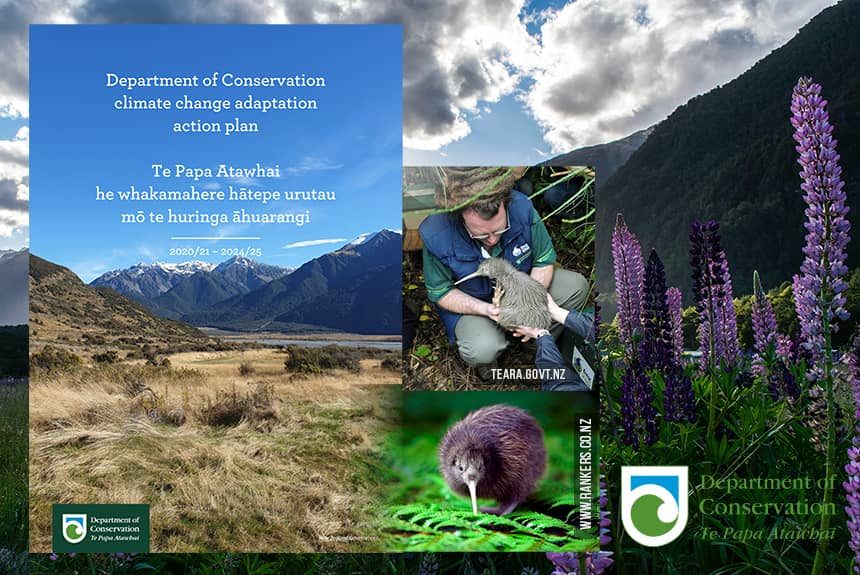Climate change is already affecting New Zealand. The country’s average annual air temperature has increased by 1°C over the past 100 years.
According to New Zealand’s Department of Conservation climate change adaptation report, more high-temperature records have been broken than low-temperature records recently.
Climate change models indicate that New Zealand can expect a warmer future, with rainfall patterns intensifying it; the country’s dry areas will become drier, while its wet regions will become wetter.
NZ’s Department of Conservation (DOC) has developed the Climate Change Adaptation Action Plan from 2020/21 to 2024/25. The five-year plan aims to “inform, prepare, and guide our response to climate change impacts, with a focus on New Zealand’s biodiversity and DOC-managed infrastructure”.
While there are known effects of climate change on New Zealand’s natural and cultural heritage, as well as its visitor and recreation resources, there are still knowledge gaps regarding the impacts of climate change on New Zealand’s environment.
Examples of this include species that are no longer found in the wild, the prevalence of mammalian pests and weeds in the Alps, and some iconic glacier destinations that are now inaccessible to visitors. These changes will impact DOC’s work and responsibilities.
The DOC Climate Change Adaptation Action Plan identifies the steps it will take over the next five years:
- Identify and rectify critical climate change information gaps
- Develop and implement the following: consistent risk assessments for priority species, habitats, regions, and assets; a suite of opportunities to reduce impacts; the required adaptation actions to address those risks, including time frames and resource requirements; and Monitoring and reporting systems to determine if the actions are successful.
- Establish an internal governance and management structure for implementation.
The plan recognises the two-pronged approach to addressing climate change: climate mitigation, which involves actions that reduce greenhouse gas (GHG) emissions, and climate adaptation, referring to plans and strategies to build resilience against the effects of climate change. Both actions are fundamental and incorporated in this report.
The plan also fulfils the principles of the Treaty of Waitangi, as outlined in section 4 of the Conservation Act, to protect land-based native biodiversity from the impacts of climate change, review marine issues, and inform sustainability planning.
To read the entire report, click the link below:
Source Citation:
DOC’s climate change adaptation action plan. Department of Conservation. Retrieved from https://www.doc.govt.nz/our-work/climate-change-and-conservation/adapting-to-climate-change/
Department of Conservation climate change adaptation action plan/Te Papa Atawhai he whakamahere hātepe urutau mō te huringa āhuarangi (2020 June). Department of Conservation. Retrieved from https://www.doc.govt.nz/globalassets/documents/our-work/climate-change/climate-change-adaptation-action-plan.pdf



Leave a Reply